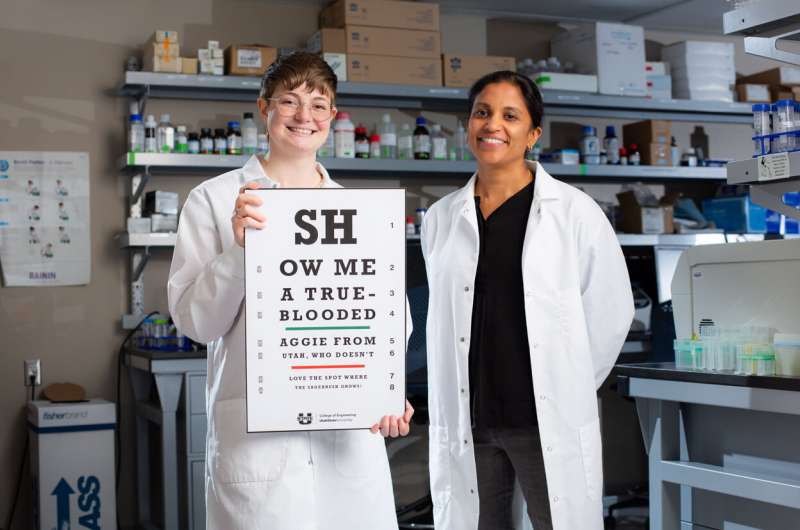This article has been reviewed according to Science X's editorial process and policies. Editors have highlighted the following attributes while ensuring the content's credibility:
fact-checked
trusted source
proofread
Biological engineers validate alternative treatments for AMD disease

A Utah State University professor and her team has found a possible solution for treating age-related macular degeneration, one of the leading causes of vision loss for older adults.
Elizabeth Vargis is an associate professor of biological engineering. Her paper was recently published in the Molecular Vision Journal on Nov. 3. Vargis' research states that controlling the growth of retinal pigment epithelial cells, an important cell found in the eye, can explain the relationship between RPE cell detachment and blood vessel formation. RPE cells help maintain healthy vision by transporting nutrients to the parts of the eye that visualize light.
When RPE cells begin to break down, it can lead to a condition called age-related macular degeneration that causes vision loss. Current treatments target a protein called VEGF, which is responsible for abnormal blood vessel growth in the retina through a process called angiogenesis.
"While AMD treatments target VEGF to slow the angiogenesis process, there are other proteins that could contribute to AMD and could be potential targets for treatment," Vargis said.
Through the method of micropatterning, or creation of specifically patterned surfaces, Vargis and her team were able to control the arrangement of RPE cells using stencils. Patterns were formed in the stencils to mimic 10 percent, 25 percent and 50 percent detachment within an RPE cell layer. Concentrations of other proteins in the eye were also measured as potential treatments.

By using stencils to control the arrangement of RPE cells in the lab, Vargis, along with graduate students Chase Paterson and Jamen Cannon, found that when junction proteins were disrupted, the cells secreted more of these harmful proteins. They also observed that the loss of junction proteins reduced the cells' ability to support photoreceptors, which are necessary for seeing.
Results showed that the growth of RPE cells was successfully controlled by the stencil patterns. When RPE cells were not held together correctly, the cells excreted levels of harmful proteins that could contribute to vision loss. Targeting those certain proteins for treatment could be a useful strategy for treating AMD, but more research will be needed to understand the timeline of their contributions to retinal diseases.
More information: The impact of early RPE cell junction loss on VEGF, Ang-2, and TIMP secretion in vitro, Molecular Vision, www.molvis.org/molvis/v29/87/index.html




















